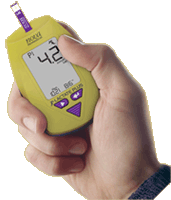Recovery weeks are equally important as a lot of the workouts or mileage you will read about, but they don't get much credit. These are the points in the training cycle that make those high mileage weeks have an effect. Testosterone and cortisol have a chance to return to normal and in return, you can actually benefit from those Instagram worthy workouts.
I've created some charts of 3 world renowned coach's training programs and zoomed out to get a full view of their training programs that everyone seems to only talk about the mileage and workouts. We can see how they cycled STRESS and RECOVERY weeks to make the training stick.
ARTHUR LYDIARD
Everyone associates Arthur Lydiard with 100 mile weeks of training, but what very few people realize is that once a person is out of the base phase, mileage takes a huge dip and the runner will spend 14 weeks out of the year working on hills, sprints, and specializing for their event. This plan is mostly for a 10k and faster specialist. He refers to his base phase as "marathon training." Essentially, the mileage was high enough that the other phases ARE the recovery. Here is what his phases look like:
Conditioning Phase (Big Mileage):
Consists of 45 minutes to 2 hours of running, averaging roughly 1.5 hours per day of running. He highly advocates for jogging on top of this mileage, but most of the paces can be at a fairly quick clip.
4 Week Hill Phase, 4 Week Anaerobic Training, 4 Weeks Coordination Training, and 2 Weeks of Sharpening (Lower Mileage/Higher Quality):
Mileage takes a significant drop in all these phases. He keeps a long run of 1 to 2 hours each week for all of the phases, but generally workouts will be at most 1 hour in length. Several of these are sprints or 1/2 hour jogs for recovery.
Read some more on Lydiard's method here.
JOE VIGIL
Famous coach of several Olympians including Deena Kastor, apparently he was doing something right. If you read his training, it's incredibly basic, but what stands out is how volatile his weekly mileage looks. Essentially, the athlete quickly builds a base within a month, then starts do decrease and increase by as much as 20% every other week.
A presentation on his training can be viewed here
JACK DANIELS
Another very famous coach of several Olympians and famed Exercise Scientist, I took this from one of his marathon plans in his book "Daniels Running Formula." For the most part, it follows an up 2 weeks, down 1 week kind of path. During the later stages of training when mileage is high and workouts are harder, he throws in a couple descending weeks to really allow the runner to recover from the tough sessions.
Summary
All three of these coaches are sure to implement mileage drops at some point to avoid stagnation and increase adaptability for the athlete. Lydiard seemed to have chosen a path of keeping the runner at high mileage for a fairly long period of time, then making a big drop when competition nears. Vigil does an up one, down one approach, and Daniels does an up two, down one method. Whatever your approach, don't just look at the mileage or workouts they prescribe, but be sure to keep some mileage variability within your training to keep those legs fresh and able to adapt.
All three of these coaches are sure to implement mileage drops at some point to avoid stagnation and increase adaptability for the athlete. Lydiard seemed to have chosen a path of keeping the runner at high mileage for a fairly long period of time, then making a big drop when competition nears. Vigil does an up one, down one approach, and Daniels does an up two, down one method. Whatever your approach, don't just look at the mileage or workouts they prescribe, but be sure to keep some mileage variability within your training to keep those legs fresh and able to adapt.









